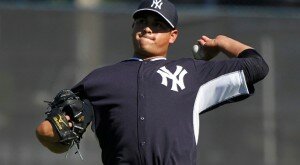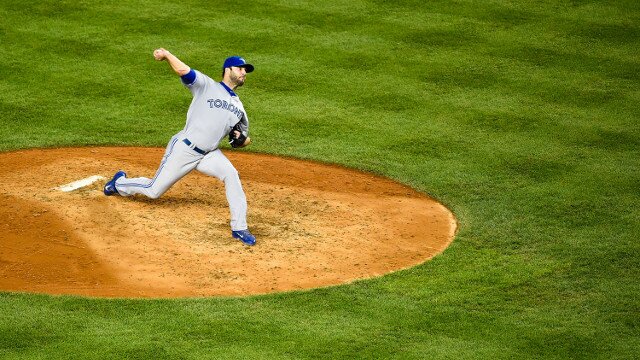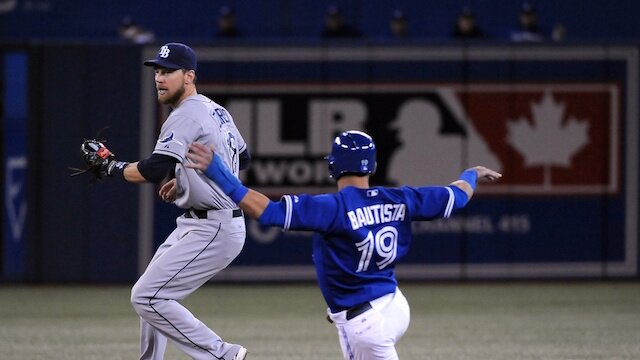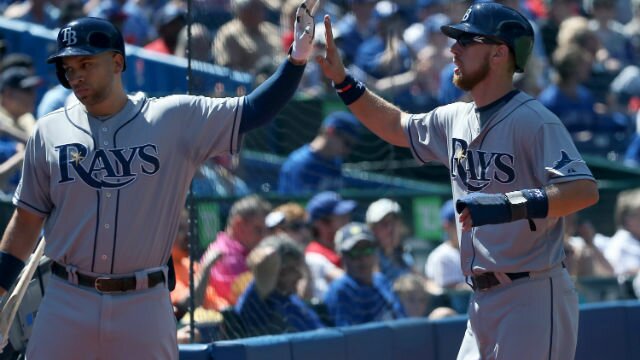Atlanta Braves Closer Craig Kimbrel And The Misconceptions About BABIP
BABIP, or batting average on balls in play, is commonly used as a way of indicating luck in baseball.
The logic behind this is that when a player puts a ball in play, he should hit around .290 to .300 (the big league average BABIP, depending on the year). Therefore, a below-average BABIP indicates that a player hit the ball right at people and experienced bad luck, and a high BABIP indicates that a player was lucky and did not hit the ball as close to fielders as he should have. In that sense, it can also be used to determine a pitcher’s luck.
However, BABIP is a flawed stat that comes with plenty of misconceptions, and the case of Atlanta Braves reliever Craig Kimbrel proves just that.
For his career, Kimbrel has a below-average .270 BABIP against. However, that may not be the result of just luck. Kimbrel is commonly known as having plus stuff, possibly the best of any reliever in baseball. His fastball has averaged above 96 mph each year since 2010, and he has has hovered around the 98 mph mark each of the past three seasons. He also features a hammer knuckle-curve that, like his fastball, is considered a plus pitch.
Because he posses such great stuff, Kimbrel induces weaker contact than an average pitcher. Hitters are not hitting the ball as hard against him, so his BABIP against is naturally going to be lower. In three of the past four seasons, Kimbrel has posted a ground ball rate higher than league average, an indication that he is inducing weak contact. In three of the past four seasons, Kimbrel also has posted an infield fly ball percentage that is above-average, another indication of his ability to induce weak contact.
One more sign that he induces weak contact is that his HR/FB ratio has been below league average in each of his four full big league seasons.
That said, Kimbrel’s low BAIBP also has likely been affected by a great Braves defense. According to Fangraphs’ Def stat, the Braves have been worth 106.4 runs above-average on defense from 2011-2014, which is good for seventh in the league. DRS (defensive runs saved) rates them even higher than that, as their 145 mark comes in at fourth in baseball.
Take out their 2011 season from that, when Kimbrel actually had an above-average .315 BABIP, and Fangraphs’ Def stat ranks the Braves as the second best defense in baseball with 125.0 runs saved above-average. Their 135 DRS also ranks them second over that time frame.
Having a great defense means that when balls are hit in play against the Braves, more of them result in outs, which also results in a lower BABIP for opposing hitters. Kimbrel’s BABIP has certainly benefited from this great defense, but he has also helped them out with his ability to induce weak contact. The question becomes how much each affected his BABIP, and that we cannot really say.
It is also relevant to look at Kimbrel’s aforementioned 2011 BABIP, which, at .315, is the only time in his career that he has posted above a league average BABIP. Part of that has to do with a poor Braves defense that year. In fact, the Braves saved 18.7 runs less than league average, according to Fangraphs’ Def stat, which ranked them 22nd in baseball. DRS was more generous, ranking them at 10 runs saved and 13th among the league.
Still, the Braves’ defense was not as good as it has been in the past three years, and that likely was part of the reason for his inflated BABIP.
That said, Kimbrel’s stuff was also not as good in 2011. His fastball averaged 96.98 mph, the lowest mark of his career in a full season, and his curveball averaged 87.48 mph, the highest of his career. Kimbrel’s velocity was not as much of a plus as it has become, and his curveball was not as effective because it had less disparity on his fastball than it does now.
In 2011, opposing hitters batted .208 against his fastball, the second-highest mark of his career, and .128 against his curve, the highest of his career. Simply put, Kimbrel’s stuff was not as dominant, and this likely had an affect on his BABIP as well.
Kimbrel’s 2014 season is a large contrast from his 2011 one, as his .235 BABIP was a career-low. Once again, the Braves’ defense likely affected it. Def ranked them the sixth-best defense in baseball in 2014, and Kimbrel’s stuff also was arguably the best of his career. His fastball averaged a career-high 98.16 mph, and his curveball averaged 86.42 mph, a full-season low for Kimbrel. Both of these factors likely contributed to his low BABIP.
Everything said, we also cannot simply put aside that BABIP still can be an indicator of luck, and this has likely affected Kimbrel. In 2011, he probably had bad luck, and fewer balls that were put in play against him were hit within reach of a defender. Then in 2014, he experienced some good luck, and more balls were hit right at his defenders. The problem is, there is no way to measure how much of these came from luck and how much of it came from a combination of other factors.
What all of this tells us is that, while BABIP is a nice tool, it cannot be used to get a proper gauge on a pitcher’s luck. There are too many factors, such as the quality of a defense, a pitcher’s ability to induce weak contact and a hitter’s knack for driving the ball with authority that factor into BABIP. Because of this, BABIP is an appropriate tool to see if there is an underlying cause for a players’s overall statistics. In fact, it is a great entry point for further research.
However, many still use it as a simplistic way of solely indicating luck; and as Kimbrel’s case shows, that doesn’t do the stat justice.
Drew Jenkins is an MLB writer and Sabermetrics Columnist for www.RantSports.com. Follow him on Twitter @DrewJenkins77, “Like” him on Facebook, add him to your network on Google, or contact him at [email protected].
Top 5 Blue Jays' Pitching Prospects In 2015
The Toronto Blue Jays gave a couple of their pitching prospects a chance in the majors at the end of 2014, so they expect to play a role in the 2015 season, but there is not much more in the pipeline. Read More
5 Players the Oakland A's Should Still Trade
The Oakland Athletics have been active this offseason, but here are five players they should still be looking to trade. Read More
Toronto Blue Jays Miss Out On Ben Zobrist
The Toronto Blue Jays' infield continues to pose a hole at 2B after missing out on trade for Ben Zobrist. Read More
Colorado Rockies: 5 Players That Could Be Traded
The Colorado Rockies need to re-tool to have any hope of becoming a playoff contender. On that note, here are five players they should still be looking to trade. Read More
Zobrist, Escobar Trade Makes A's Contenders
The Oakland Athletics continue to make a splash in the offseason by trading for Ben Zobrist and Yunel Escobar from the Tampa Bay Rays. Read More
5 Players The Braves Should Trade For
The Atlanta Braves have a lot more moves to make before the start of the season. Take a look at these players the Braves should consider trading for. Read More
Tigers Need A Break Out Season From Shane Greene
With multiple uncertainties in the starting rotation, it would be huge if the Detroit Tigers could get a breakout season out of newcomer Shane Greene. Read More
Tampa Bay Rays: 5 Players They Could Still Trade
With the Tampa Bay Rays heading into a transitional season, here are five players they should still look to trade. Read More
Assessing the SF Giants' 2015 25-Man Roster
The San Francisco Giants aren't as dangerous on paper as they were a season ago. Read More
Going Home To Blue Jays May Be What Axford Needs
It has been a long time since John Axford has been great. With a need for bullpen help, the Toronto Blue Jays should take a chance on him. Read More
Shields Would Be Best Ace Add For Cardinals
The St. Louis Cardinals are reportedly interested in adding an ace, and signing James Shields would be the best way for them to do so. Read More
Power Ranking NL Central Starting Catchers
The NL Central boasts the best catchers in all of baseball. Here is how they rank heading into the 2015 season. Read More

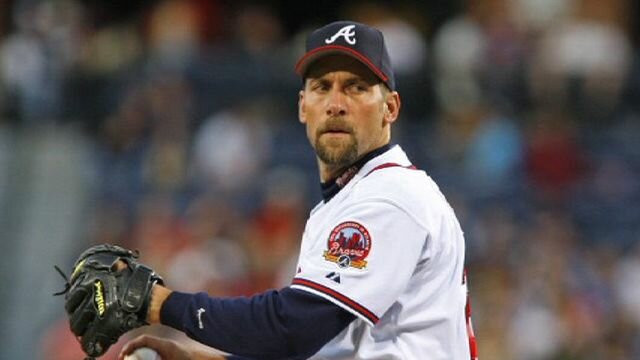
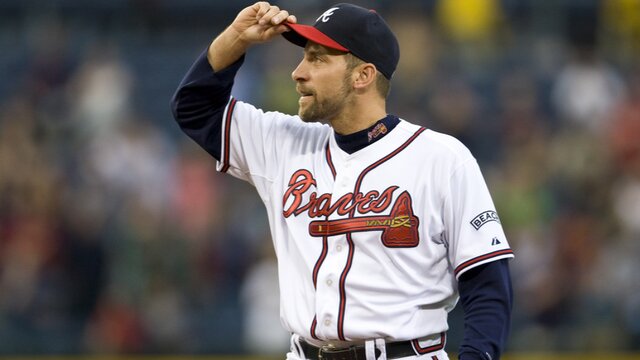


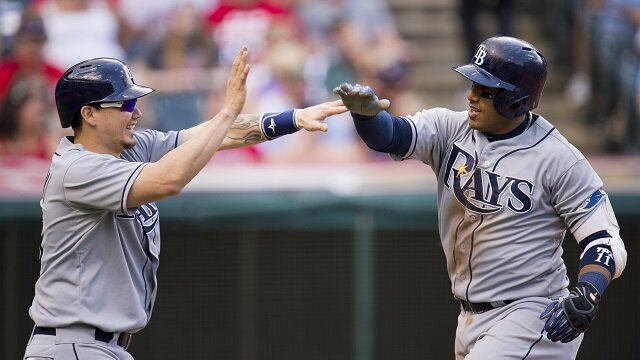
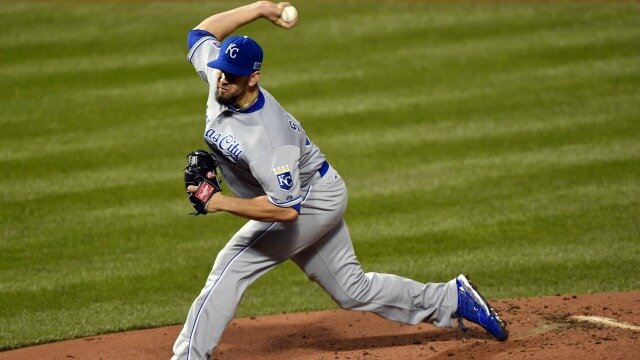


 @DrewJenkins77
@DrewJenkins77 


